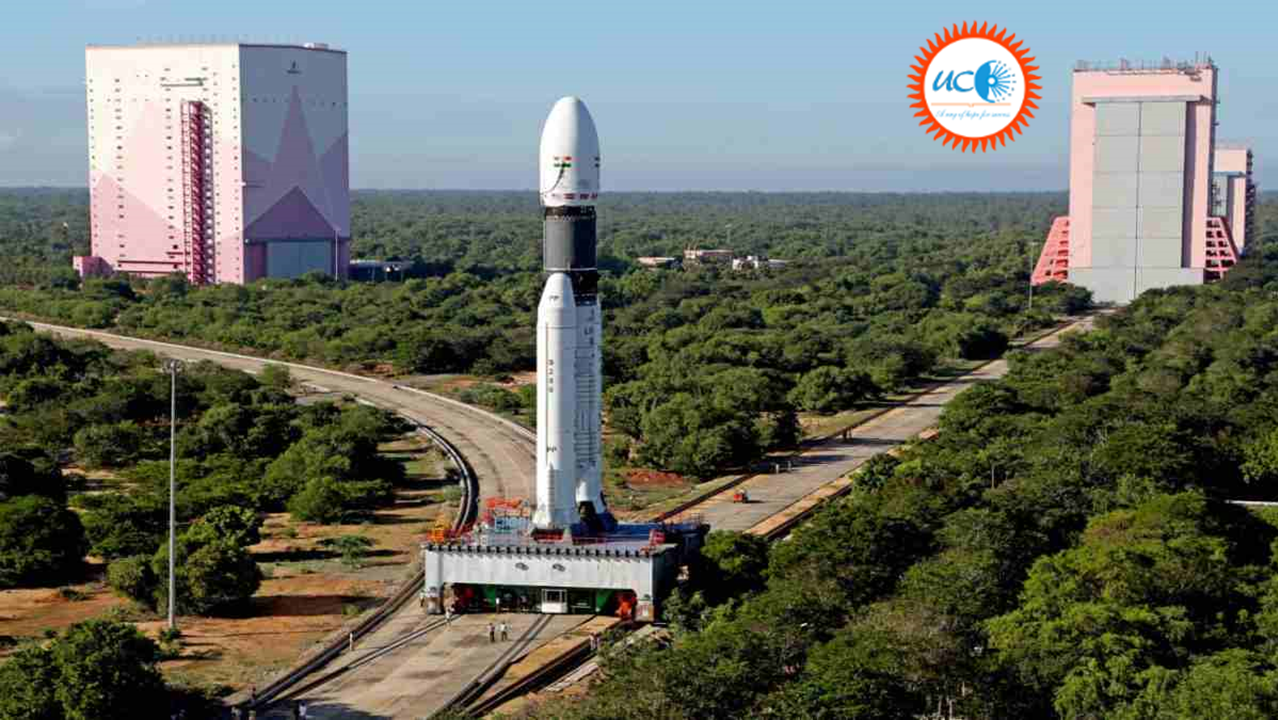ISRO’s heaviest rocket LVM3 to make commercial foray with launch of 36 OneWeb satellites.
Why in News?
- Recently, it has been announced that ISRO’s heaviest rocket LVM3 will launch British start-up OneWeb’s 36 broadband satellites from the spaceport in Andhra Pradesh’s Sriharikota on October 23, marking the launcher’s entry into the global commercial launch service market.
- LVM3 was earlier called GSLV Mk III.
- The launch of ‘LVM3 – M2/OneWeb India-1 Mission’ is scheduled at 0007 hours IST on October 23 (midnight of October 22), the Bengaluru-headquartered Indian Space Research Organisation (ISRO) said on Friday.
GSLV-III
- The GSLV-III or Geosynchronous Satellite Launch Vehicle Mark III is a launch vehicle under development.
- Geosynchronous Satellite Launch Vehicle is a launch vehicle under development. ISRO is developing this to enable India to launch its heavier satellites without dependence on foreign rockets and providers.
- GSLV has attempted eight launches to date, from its first launch in 2001 through its most recent launch in 2014.
Features
- The GSLV MK-III is a 3-stage vehicle and will have an Indian cryogenic third stage.
- The 3 stages of GSLV MK III are solid boosters, liquid motor, and cryogenic upper stage.
- The experimental mission of India’s GSLV-Mk III is launched in the first half of December.
- The 630-tonne GSLV-MK III will carry a crew module (3.65 tonnes) without astronauts
- GSLV-MK III can put a communication satellite of 4 tonnes into geosynchronous orbit or 10 tonnes satellite into low earth orbit.
History of GSLV MK III
- Development for the GSLV-III began in the early 2000s, with the first launch planned for 2009-2010.
- The first flight of the GSLV Mk. II, with an Indian-developed third-stage engine was made in April 2010 but it resulted in a failure as 3rd stage failed to ignite.
- The next launch, in December 2010, used the Russian engine; however, the vehicle went out of control during the first stage flight so it also failed.
- GSLV-D5, launched on January 5, 2014, was the first successful flight of the GSLV Mark. II using the indigenously developed cryogenic engine.
- A flight test of the GSLV-III launcher, with a cryogenic third stage, was successfully carried out on 18 December 2014.
- It was not a full flight.
- It carried a crew module to a height of 120km.
Significance:
- The launch of GSLV Mark III will enhance India’s capability to be a competitive player in the multimillion-dollar commercial launch market. It will help in earning huge foreign exchange. India’s dependence on foreign launch vehicles to put its heavy satellites (eg. INSAT series) will be reduced.
- The GSLV Mark III will help ISRO put heavier communication satellites of the INSAT-4 class into orbit.
- This will unleash India’s dream of sending its astronauts into space come true. ISRO calls its mission to send astronauts to space the Human Space Flight (HSF) program.
What’s the difference between liquid and solid-fuel rockets?
- There are two main types of rockets: liquid-fuel and solid-fuel. Liquid-fuel rockets consist of a fuel and oxygen (or other oxidizer) in liquid state.
- They are combined in a combustion chamber and ignited. The fuel flow to the engine can be controlled, the amount of thrust produced can be regulated and the engine can be turned off or on as needed.
- Solid-fuel rockets consist of a fuel and oxidizer that are pre-mixed in a solid form. Once the solid fuel is ignited, the resulting thrust cannot be regulated or turned off. This fuel system is simpler, safer, and cheaper—but less efficient—than that of a liquid-fuel rocket.
Functioning of Engines
Cryogenic Engine:
- A rocket engine needs an enormous amount of thrust to escape Earth’s gravitational pull. However, the chemicals used for engines are Hydrogen and Oxygen (Hydrogen is used as a fuel, while Oxygen as an oxidizer) that produce a good thrust, found on Earth in the form of gas.
- Carrying hydrogen and oxygen in their gaseous form will require a bigger fuel chamber, which not only increases the size but also the weight of the rockets and this will mean undertaking of an impossible task to send a launch vehicle into space.
- So the solution is to use hydrogen and oxygen in their liquid form or in a cryogenic form which is easier to transport, as the volume of propellent decreases.
- As density increases in liquid form, more thrust can be produced in less burning time. Such engines are called Cryogenic engines.
- Cryogenic fuel is used in rockets, spaceships, or satellites because ordinary fuel can not be used in space due to the absence of an environment that supports combustion.
- This fuel requires storage at an extremely low temperature (-253 degrees Celsius) to maintain them in a liquid state.
Semi-Cryogenic Engine:
- Unlike a Cryogenic engine, a Semi Cryogenic engine uses Refined kerosene instead of liquid hydrogen. The liquid oxygen is used as an Oxidiser.
- That’s the advantage of using a Semi Cryogenic engine as it requires Refined Kerosene which is lighter than liquid fuel and can be stored at a normal temperature.
- Kerosene combined with liquid oxygen provides a higher thrust to the rocket.
- Refined Kerosene occupies less space, making it possible to carry more propellant in a Semi Cryogenic engine’s fuel compartment.
- A semi-cryogenic engine is more powerful, environmentally friendly, and cost-effective as compared to a cryogenic engine.






